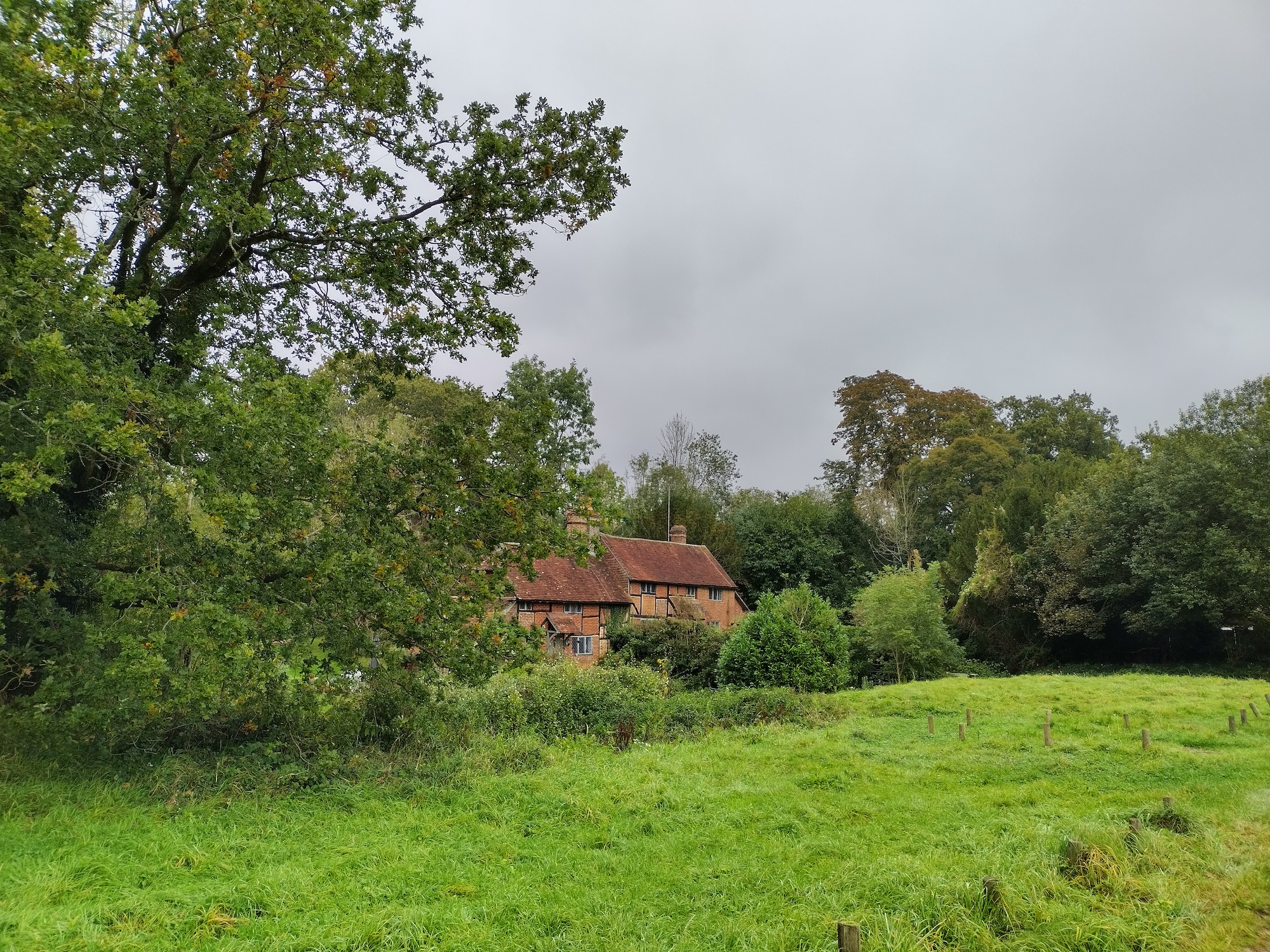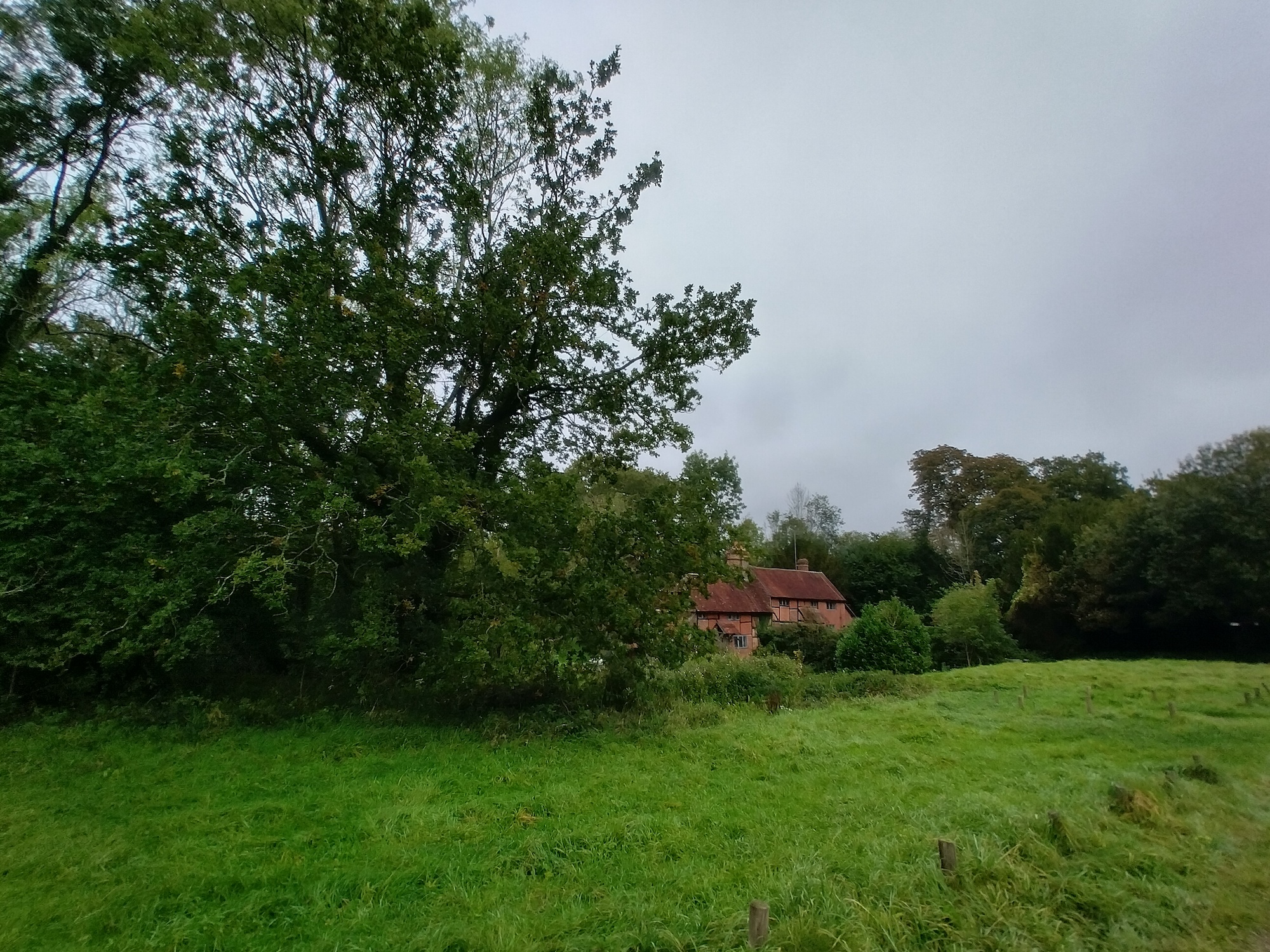
“The Nokia G50's 5G connection isn't a reason to buy, it's just a decent benefit for the future. Instead, the battery life and software make it worth seeking out.”
- Long battery life
- Strong build quality
- Fuss-free, reliable software
- Guaranteed software updates
- 5G for the future
- 60Hz refresh rate screen
- Low-resolution screen
- Big and heavy
The $300 Nokia G50 may get headlines for including 5G for its $300 price, but no matter what the mobile industry wants you to think, it’s not really a reason to buy this phone, or any other at the moment. Instead, you should still be looking at all the usual suspects — software, battery, screen, and camera — before making a decision.
With the G50 in my daily use for more than a week now, I’ve found it wins in two out of those four categories, which means 5G is enough to tip it over the edge to become a recommended purchase. But you still need to be very aware of its one major downside.
Design
The Nokia G50 is a very big phone. The 6.82-inch screen is massive, the body is nearly 9mm thick and 174mm tall (the Galaxy S21 Ultra is 10mm shorter, for comparison), and it weighs 220 grams. It will bother small pockets, but never get lost in a bag. There is absolutely nothing subtle about it at all, and it is entirely unsuitable for use with one hand.

The rear panel is made from plastic and is moderately grippy. On the right-hand side is a fingerprint sensor in the power key, and on the left is a Google Assistant button. It’s in exactly the right place to press all the time, and is a hateful addition because it can’t be remapped to something more people may find helpful. You can deactivate it entirely, but this way it just feels like a wasted opportunity.
Around the back, the design is business as usual for Nokia with a circular camera module, simple branding, and an Ocean Blue color, which is another in a line of Nokia colors inspired by the Nordic environment. It catches the light in an attractive fashion and doesn’t get covered in fingerprints. On the top of the phone is a 3.5mm headphone jack, and charging at the opposite end is performed using a USB Type-C connector.

For the past week, the G50 has been in and out of pockets and bags, roughly thrown in the door pocket of my car, and generally not treated with kid gloves. There’s something about the substantial frame and gigantic size that encourages this kind of treatment, and the good thing is the G50 looks the same as it did when it came out of the box. It’s not a rugged phone, but there’s a distinct toughness here, and while the design makes it hard to tell it apart from many other recent Nokia phones, it’s still attractive in a simple way.
Screen
Oh dear, the screen is where the G50 really loses points. It’s 6.82-inches in size, which is gigantic, but the 1560 x 720-pixel resolution is definitely not. It’s an IPS LCD panel, so there’s no always-on display available, there are some serious bezels around it, the 450 nits maximum brightness is only just about acceptable, but worst of all is it’s a 60Hz refresh rate panel.

Whether it’s the low resolution matched with the large size, or that my eyes are very used to a 90Hz or 120Hz refresh rate screen, but scrolling on the G50 is often an unpleasant, fuzzy mess. The G50 could be used to sell phones with higher refresh rate screens, because the difference between them is so marked, even the most ardent “I don’t understand the fuss” denier will quickly be convinced 90Hz or higher is the only way to go.
Almost as bad is the dimwitted automatic brightness, which is far too slow to react in sunny outdoor conditions, and it’s often faster to actually adjust the brightness manually. It’ll need to be at max brightness to be seen anyway. Does this mean it’s a disaster for video? No, it’s not that bad. Viewing angles are good but you quickly lose some of the color, which, when viewed straight on, are vivid and pretty. It’s all far better than you’d expect. I can even live with the clear and loud single speaker on the bottom of the phone.
However, the fuzzy blur from the 60Hz refresh rate is harsh on your eyes, makes everything from Twitter to Google Discover unpleasant to use, and by far the worst part of the Nokia G50’s screen. It’s unfortunate, as otherwise, it’s decent for a phone at this price.
Performance
Nokia’s pushing the G50 as an affordable 5G phone, and sure enough, I received a 5G signal, delivered here by a Qualcomm Snapdragon 480 processor and its associated modem. You’ll get Sub6 5G, but not mmWave. While 5G is nice to have, it’s not essential for everyday use yet, and I’d rather have a higher refresh rate screen for example.

The Snapdragon 480 is a decent performer, but it’s never what you’d call really fast. Apps open and screens swap at a sedate-but-never-frustrating pace, you can play Asphalt 9: Legends but it never feels blisteringly, edge-of-your-seat quick, just acceptable. The G50 has 4GB of RAM and 128GB of storage space, and the good news is there’s a microSD card slot to add up to 512GB to this total. The call quality is really good, and I had no problems with network, Wi-Fi, or Bluetooth connections.
Camera
It’s standard fare inside the circular module on the back of the G50, with a 48-megapixel main camera, a 5MP wide-angle camera, and a 2MP depth camera. The results are consistent with similar camera setups found on other phones too, with the main camera producing pretty, colorful, and shareable (with a bit of editing) pictures. I like it.

The wide-angle is less successful. It takes photos that are too dark, and detail gets lost in shadow especially on overcast days. I wouldn’t choose to use it in situations where I care about the results. The depth camera assists with portrait shots, which have acceptable edge recognition but also suffer from problems in low light. There are various portrait selfie modes that add an unusual background to your shots, but they aren’t very successful due to an incredibly artificial look.
If the 48MP/5MP/2MP camera combination didn’t give it away already, the Nokia G50’s camera doesn’t stand out from the competition, but does the job provided you don’t expect too much outside of the main camera.
Software and battery
The Nokia G50 has Android 11 installed without any special interface over the top, meaning it’s much like a Google Pixel’s software experience, and all the better for it. The Snapdragon 480 chip is gutsy enough that the software never feels ponderous, it runs all the apps I installed, received notifications without issue, and has been a trusty partner during my time with the phone.

Friendly software like that installed on the G50 makes a huge difference to ownership. The phone may not have flagship hardware, but the software is better than some other phones that do have more enviable specs. It’s logical and easy to use right from the start, and a high point of the G50.
It’s the same with the battery. The 5,000mAh cell inside the G50 certainly contributes to the phone’s size and weight, but because the phone lasts for two to three days without a recharge, it probably won’t matter to everyone. If battery longevity is what you want, the G50 is worth it. It sips power when on standby too. When the phone wasn’t used much outside of messages and a few photos, it barely used 20% of its energy even though it swapped between 4G and 5G connections throughout the day.
If battery longevity is what you want, the G50 is worth it
Sadly it doesn’t have very fast charging — 18W quick charge only and no wireless charging — and it takes at least an hour and 45 minutes to recharge.
Price and availability
The Nokia G50 can be purchased through Nokia’s own online store in the U.S. for $300, or in the U.K. for 200 British pounds.
Our take
The mobile industry wants you to think 5G is a reason to buy a smartphone, but it’s not. At least, it’s not yet. It’s better to think of it as a feature that may help you keep hold of the phone for longer, and instead look at features that enhance ownership on a daily basis now, such as the screen and the camera when choosing a new phone. The G50 doesn’t excel in either area, but provides adequate ability for the price, and wins with its great software and long battery life.
Is there a better alternative?
In the U.S. you could take a look at the Moto G Stylus (2021) or the Moto G Power (2021) which cost between $250 and $300, the OnePlus Nord N200 5G which has a 90Hz screen, or the $280 Samsung Galaxy A32 5G. However, if you spend $400 you could get the Google Pixel 5a with its excellent camera and even better software, or the currently reduced OnePlus 8 with its Snapdragon 865 chip and 90Hz screen.
Don’t confuse the G50 with the recently announced Nokia G300, which will be released through the Tracfone and Straight Talk networks. It’s just $200, but has a smaller screen and a lower-spec camera.
In the U.K. the Realme 8 5G gives you a 90Hz screen, a big battery, and a good camera for the same price as the Nokia G50, as does the Xiaomi Redmi Note 10 5G. If you can stretch your budget to 300 pounds the OnePlus Nord 2 CE 5G is good value, or for 400 pounds, get the OnePlus Nord 2 5G or the Samsung Galaxy A52 5G.
How long will it last?
There’s good news on the software as it will receive major version updates for two years, and security updates for three years. While 5G isn’t a reason to buy the G50 on its own, its presence may make a difference over the course of ownership as the network becomes more accessible and useful. The G50 doesn’t cost much money, but will realistically provide three years of use.
It does not have a water resistance rating, and it’s not a rugged phone by design. A case would be a good idea, although the phone does feel like it’ll take a little bit of harsh treatment on its own.
Should you buy it?
Yes, the software, battery life, and build quality, along with a decent-but-basic camera, are the reasons to buy. The 5G will just help it last you longer.
Editors' Recommendations
- The best Moto G 5G (2023) cases you can buy
- Why Nokia made an Android phone it wants you to tear apart
- HMD Global wants you to keep your new Nokia phone and save the planet
- Moto G 5G hands-on review: Good phone, better battery
- Motorola G Stylus 5G hands-on review: Notetaking nirvana on a budget













